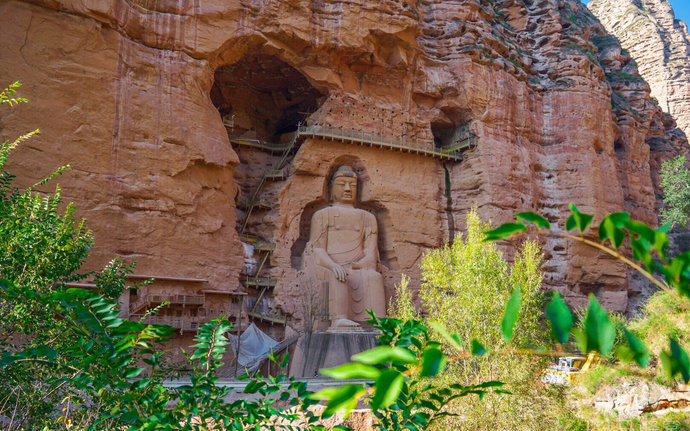
The Binglingsi or Bingling Temple Grottoes boast a history that stretches back over 1,600 years ago! Within these ancient grottoes, there are statues and murals that were constructed from the Western Qin Dynasty (385-431) right through until the Ming Dynasty (1368-1644). This cluster of caves has been carved directly onto a steep cliff-face within the Dasigou Gorge on the northern bank of the Yellow River.
This grotto complex is separated into two main sections: the Upper Temple, and the Lower Temple. Out of the 200 caves that have survived, 184 of them are located within the Lower Temple, which is open to the public. The largest statue within these grottoes towers in at over 27 metres (89 ft.) in height, while the smallest is less than 20 centimetres (8 in) tall. After all, when it comes to showing your devotion, size doesn’t always matter!
Among these 184 caves, the largest and most valuable one is Cave 169. What makes this cave so special is that most of the surviving murals and statues within its interior date all the way back to the Western Qin Dynasty. It is also home to the oldest statues following the “Three Saints of the West” motif in China.

From the Northern Wei Dynasty (386-534) onwards, Buddhist art started to adopt more Chinese features and was progressively being Sinicized. Most of the statues within the Bingling Temple Grottoes were sculpted during the reign of Emperor Xuanwu (512-515) of the Northern Wei.
During the Tang Dynasty (618-907), the Bingling Temple area became an important hub for people travelling from central China to Tibet. New grottoes and niches were constructed. As time went on, the style of the statues and the art was influenced by a hectic mixture of cultures.
In Tibetan, the term “Xianba Bingling” translates to mean “one thousand Buddhas” or “one hundred thousand Buddhas,” although the temple didn’t receive this illustrious name until the reign of the Yongle Emperor (1403-1425) during the Ming Dynasty.
Tibetan Buddhism began to flourish in the Yuan Dynasty (1271-1368), during which time numerous Tibetan Buddhist monks flocked to the Bingling Temple Grottoes to worship. As a consequence, many of these monks converted the existing Buddhist statues into ones that followed the Esoteric style, and similarly painted over some of the simpler murals. For this reason, you may notice that colour of the paint on all of the Esoteric Buddhist murals is still very bright, since they are relatively new by comparison to their counterparts.